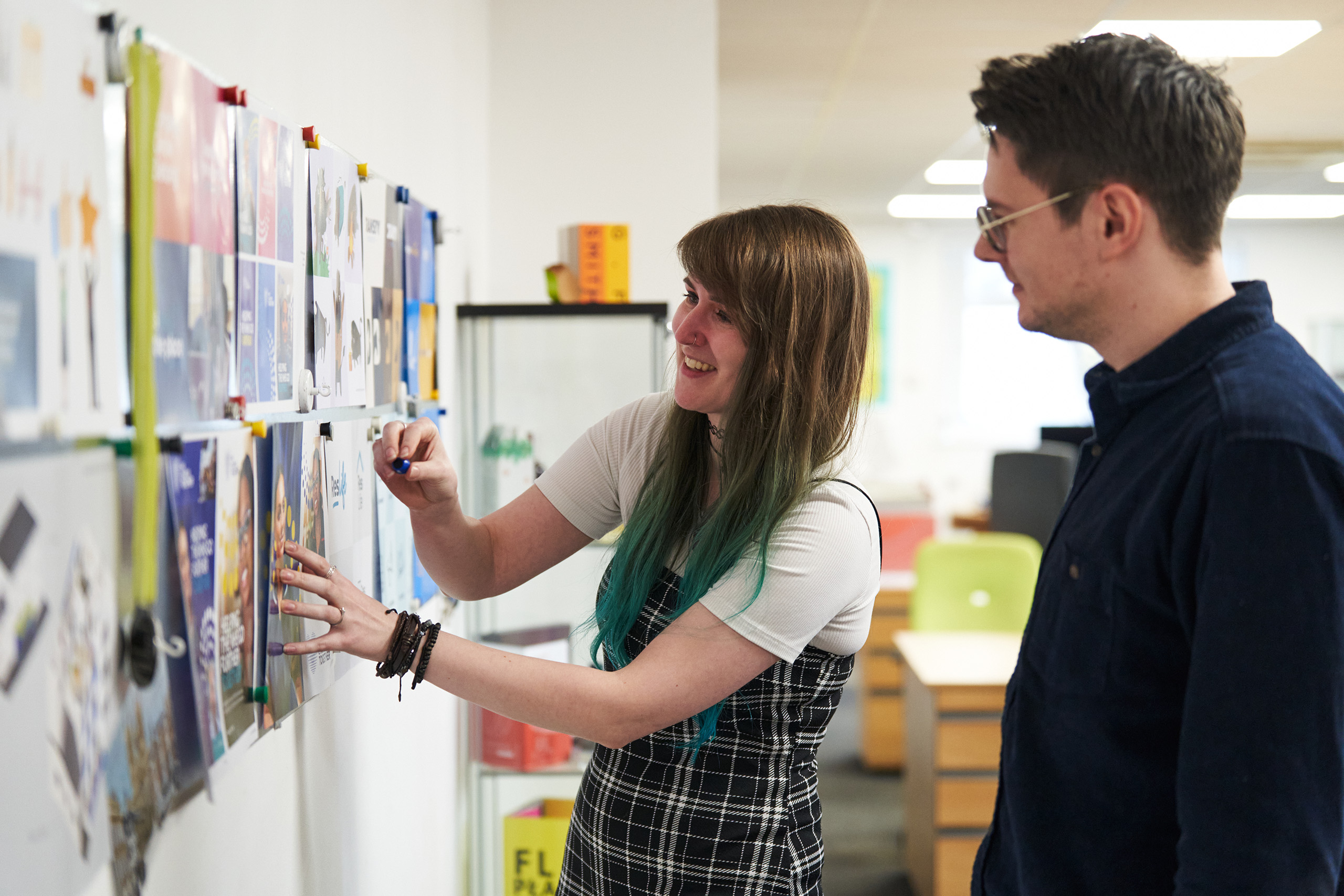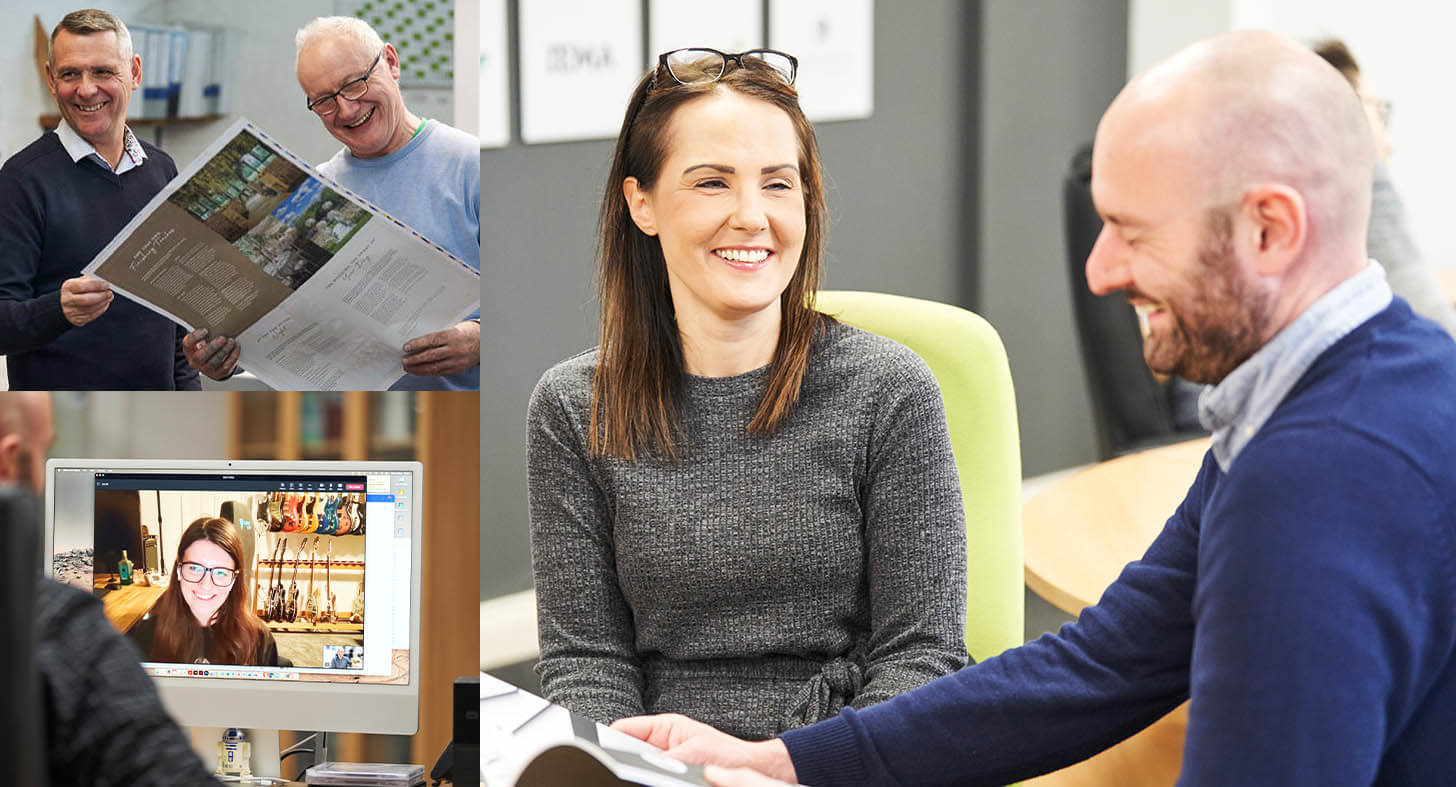In January 2024, we implemented the 9-day fortnight - a flexible working pattern that lets staff gain an extra day off every two weeks, by working their contracted hours over 9 days instead of 10.
Where did it all start?
After the 2020 pandemic forced the world to shut down, the way we defined 'business as usual' completely transformed. As a result, people across various industries began adapting to new remote and hybrid working models. The traditional 9-5, Monday-to-Friday schedule was increasingly seen as outdated, with many viewing it as no longer a one-size-fits-all solution. While this shift isn't solely linked to Covid-19, the pandemic accelerated the transition, showing that flexible working models can be effective as society and lifestyles continue to evolve.
As a creative production agency, we have always embraced change and prioritised building an inclusive environment for our staff. We continuously tailor our approach to accommodate individual circumstances, always seeking ways to support our staff and the long-term success of our business. And after researching the positive impact of flexibility on a healthy work-life balance, we were inspired by the successful stories of movements like 'the four-day workweek'.
So, we trialled a four-day workweek for our production team back in October 2022. This was a huge success - with a 20% reduction in energy consumption and positive feedback from our staff without compromising productivity or impacting our clients' schedules. (Learn more about this here) However, when implementing a company-wide initiative, we needed to consider what would work for everyone and how it would align with our operations.
How does the 9-day fortnight work?
Over the years, we introduced various flexible options to suit individuals, including hybrid and fully remote working, part-time hours, compressed schedules, and adjusted start and finish times. Therefore, what came next only felt like a natural progression.
Fast forward to 2024 - we introduced the 9-day fortnight! This is an entirely optional and flexible working pattern that essentially gives employees an extra day off every other week, after compressing their working hours over nine days instead of the traditional ten.
Approximately 65% of our workforce joined the scheme, with an additional 25% already following alternative schedules. While some staff chose to stick with their regular working hours, others adjusted their schedules in line with business needs and personal commitments.

But what are the pros and cons?
Our commitment to flexibility is highly valued by our people and has always played a significant role in our employee retention, overall productivity, and the health and wellbeing of our team. But of course, any new initiative brings a mix of excitement and uncertainty. To ensure everyone was well-informed and to gather essential feedback, we conducted a staff consultation period, sharing clear communications and hosting staff meetings alongside open-door sessions both before and during the trial.
James, Senior Designer and Illustrator, shared that "When the 9-day fortnight idea was introduced, it was the first time I've ever heard of it and I wasn't entirely sure how it was going to work for everyone. But after trailing it for a year, I couldn't imagine going back."
And the new working pattern also had other unexpected advantages! According to Jon, our Technical Artworker, "At first it took a bit of adjusting, but now even commuting to work is better as the new schedule helps us avoid peak traffic!"
As part of implementing the scheme, we reassessed working days and holiday allowances, adding 45 minutes to each 8-hour day. This adjustment reduced annual leave by 2.5 days but provided the benefit of an extra day off every two weeks—equivalent to about 26 additional days off, nearly doubling total annual leave!
"The introduction of the 9-day fortnight was a pleasant surprise. Initially, I didn't fully understand the holiday recalculation, but then had more discussions with the team and also did my own research. I got used to the new routine now and much prefer it to the standard 9-5 I was doing before", expressed Ben Cucksey, Senior Designer.
Another initial concern was related to the services we provide our clients, but thanks to the systems we put in place, we have successfully maintained the same high standards without compromising quality or customer service. And our office colleagues agree as well: "Managing workload and client meetings took a bit of adjustment at first, and while Monday mornings can be busy catching up, it's entirely manageable and definitely worth it. I believe strong communication has been key to our great results." – Abby Atkin, Key Account Manager.
Key Account Manager, Verity Stephenson, also added: "While it can be a bit tricky to fully switch off and avoid checking emails on my Friday off, the strong buddy system we've developed in the office has made it easy to support each other, ensuring everything runs smoothly."

So… was the 9-day fortnight worth it?
We have now completed a full year of the 9-day fortnight trial. And after evaluating the results it had on our workforce and business, we can whole-heartedly confirm that it was all worth it! After consulting our staff, the response was overwhelmingly positive. We recorded higher levels of satisfaction with their work-life balance, as well as increased motivation and productivity.
Throughout the year, we monitored client perceptions through surveys and communications to ensure the changes had no negative impact—and so far, the feedback has been entirely positive. "Not only did we receive no negative customer feedback, but we were also praised for our initiative. In fact, we even influenced organisations like Destination Lincolnshire to explore how they could implement similar schemes!"– Andy Clayton, Head of Client Strategy.
Given the success of the trial, with our team exceeding client expectations and driving the business forward, we've decided to extend it into 2025. We'll continue to evaluate the impact of this working pattern while prioritising the wellbeing of our people.
Through efficient collaboration, we collectively made the 9-day fortnight work. As a result, people now get to enjoy more quality time with their friends and family or even by themselves - be it for leisure or for running those errands they don't normally have time for during the week. And whether they make it a productive day or get to enjoy an extended weekend with their loved ones, it all sounds like a win to us!
Feeling inspired and would like to explore a similar initiative for your business? Let's chat!


